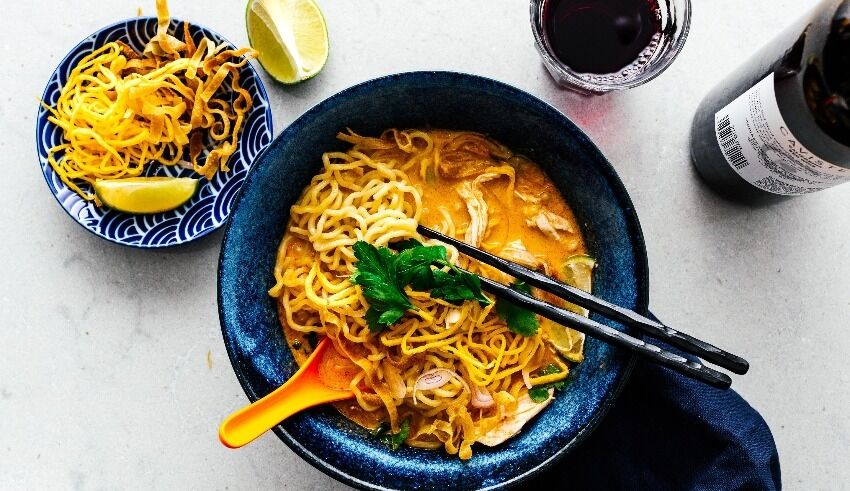
There has been a lot of talk about a meal from northern Thailand that is called “khao soi,” which is a noodle soup that is creamy.
TasteAtlas, an online travel guide that focuses on food and has evaluations as well as recommendations from culinary professionals and critics from across the world, deemed it to be the best soup in the world a month ago. The website published its findings on its website.
In the past, the website has ranked not just the top 100 greatest dishes in the world but also the best desserts, best seafood dishes, and best desserts overall, amongst other categories. The rankings are determined by the ratings left by users of the website.
In a ranking that included 100 soups of the same kind, the Thai dish that was just somewhat hot came out on top with a score of 4.9 out of 5. This put it ahead of Cullen skink, which is a smoked haddock soup from Scotland, as well as ramen from Japan.
The results of the rankings were disseminated across various social media platforms by the Tourism Authority of Thailand.
Even though the history of khao soi in Thailand is murky, it is generally accepted that the dish was influenced by Chinese Muslims who had traveled from Yunnan in southwestern China to Myanmar and Laos before arriving in Thailand. It is believed that the dish originated in the northern part of the country.
Additionally, it is extremely similar to a well-known cuisine in the neighboring country of Myanmar that is known as “ohn no khao swè.” This dish is composed of noodles, chicken, and coconut curry soup.
Chiang Mai is known throughout all of Thailand for its delicious khao soi. Egg noodles, braised beef or chicken, and fresh spring onion and coriander are typically included in the base of this dish, which is then topped with crispy noodles, fresh spring onion, and coriander.
Keep Reading
It is impossible to eat a bowl of khao soi without the accompanying condiments, which are often raw shallots, pickled cabbage, and a lime wedge.
“These three items have to be added in order to lessen the richness,” said Wanida Mahadilok, whose family owns one of the oldest khao soi establishments in Chiang Mai. “These three things are the only way to decrease the richness,” she continued.
The northern province is home to a number of restaurants and eateries that have, for several decades, been providing the well-known noodle soup.
One of these establishments is called Khao Soi Lamduan Fa Ham, and ever since World War II, it has been serving its namesake khao soi to clients that span multiple generations.
Lamduan, Wanida’s mother, established the first branch in the Fa Ham sub-district in 1943. It was named after the area. When the war was in full swing, customers would come to Lamduan’s orchard by the Ping river to sit and slurp their noodle curry while sitting under longan trees in the orchard.
At first, the restaurant did not serve khao soi but rather served rice noodles in a transparent broth instead of khao soi. Wanida claims that her mother didn’t start making khao soi until after her clients instructed her on how to prepare the noodles in the manner in which they preferred to eat them. Many of them were Yunnanese Muslims of Chinese ethnicity.
After some time, the transparent soup was removed and replaced with a smooth coconut broth that was flavored with fragrant red curry paste. Lamduan’s recipe was the product of her enthusiasm for cooking and her inventiveness, which drove her to experiment with a variety of ingredients and flavors prior to arriving at a rendition of khao soi that would go on to become a favorite dish among the locals.
The exquisite and nuanced flavor of khao soi has spread throughout Chiang Mai’s culinary landscape throughout the course of time. The dish’s popularity has spread to other regions of Thailand, including the country’s capital city of Bangkok, where a number of restaurants now offer it as an option for diners to choose from.
The national celebration of the northern Thai soup’s rise to prominence on the international stage went down without a hitch in Thailand. Not only did the news fill Wanida with pride and excitement, but it also brought to her mind the legacy that her mother had left behind.




